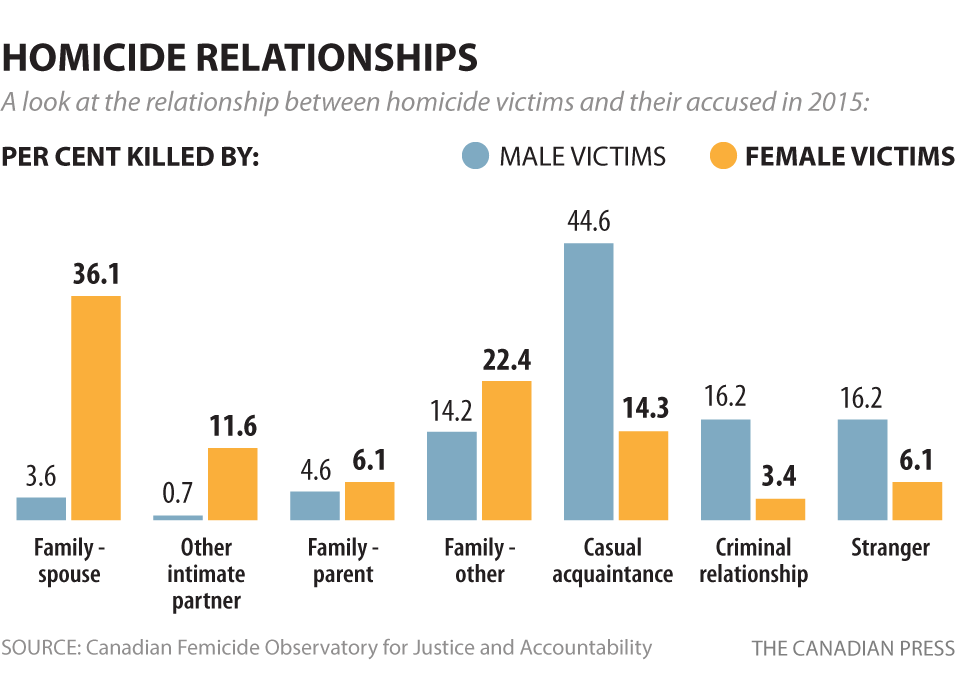Female Vulnerability to Intimate Violence
"Woman safety is one of the best ways to gauge a nation’s long-term wealth growth potential, with a correlation of 92% between historic wealth growth and woman safety levels. This means that wealth growth is boosted by strong levels of woman safety in a country."
"Most of the countries in our top 10 are also popular destinations for migrating HNWIs (High-net-worth individuals). Also, most of them have experienced strong wealth growth over the past 10-20 years."
New World Wealth report places Canada 6th of the top 10 countries for female safety
"The country has been doing great in terms of promoting economic independence which includes women education, access to health care, laws for protection of the native women and girls, law against child marriages which rather comes under tremendous accomplishments."
"Canada is still working on providing equal wages to women as that of men so as to put an end to gender discrimination."
Quora
 |
 No. 3: Canada No. 3: Canada
Canada
ranks as the No. 3 country for women in 2019, an improvement of three
spots compared to 2018. Although the country has seen some progress with
gender equality in the past year, slow progress has been made in
closing the pay equality gap, according to Paulette Senior,
president and CEO of the Canadian Women’s Foundation. Canada ranked No.
16 out of 144 countries in the World Economic Forum’s Global Gender Gap
Report 2017.
|
"It really drove home how often this [gender-related killing of women in Canada] was happening when we were monitoring this on a daily basis."
"Women are still most at risk of men that they are intimate with or who they should be able to trust."
"The context in which women and girls are killed is vastly different because they're most often killed by people they know, and that's in contrast to males who are most often killed by acquaintances and strangers."
"You don’t focus on this on a daily basis and come away feeling unaffected. … You wonder why it’s still happening, why we continue to see these killings happen in the same way that they have been for decades."
"We don’t talk about things like criminal harassment or the fact that most women are killed after leaving or declaring that they’re going to leave a partner. We have to challenge all the myths and stereotypes that tell women it’s their own fault."
Myrna Dawson, professor, Sociology and Anthropology, University of Guelph
/arc-anglerfish-tgam-prod-tgam.s3.amazonaws.com/public/745FHFSXKJPHDA3E6UNWDNPI6U.jpg) |
Flowers are seen outside a home in Ajax, Ont., on Thursday, March 15, 2018.
Colin Perkel/The Canadian Press
|
On any global scale of violence against women, Canada ranks fabourably in the top five or six, well above even Canada's nearest neighbour, the United States of America. And while certainly Canadian women are far more protected than their counterparts in India, Niger, Sudan, Mali, Iraq, Libya, Myanmar, Democratic Republic of Congo, Somalia, Saudi Arabia, Central African Republic, Pakistan, Yemen, Mali, South Africa, Afghanistan, or the Syrian Arab Republic, to name some of the most notorious countries whose women live with dire threats of violence, no country is completely immune.
According to statistics gathered through this first of planned annual studies resulting in reports to be released to the public, a woman or girl in Canada was killed every 2.5 days on average in the last year. According to the newly-released report, 148 women and girls were killed in 2018, in 133 reported incidents where 140 people now stand accused of their deaths, with over 90 percent of those who were accused being men.
 |
All the data collected for this report was gathered from media reports of such violent deaths targeting women the study explained, since information pulled from the media was readily available, rendering at least as accurate a picture as information derived from official sources. In years to come, however, as these cases make their way through the justice system' researchers plan to scrutinize court records to track updates.
It was pointed out by Dr. Dawson that demographics disproportionately skew statistics in the instance of Indigenous women who represent a mere five percent of the population yet who also made up 36 percent of the women and girls killed through violence. Violence perpetrated in the main by intimate others. In another instance of disproportionate representation among certain groups rural women and girls representing 16 percent of the population claimed 34 percent of violent deaths committed against females.
Additional data – compiled through police press releases as well as through news reports – indicated that women were most commonly killed in 2018 by shootings (34 per cent), followed by stabbings (28 per cent) and beatings (24 per cent).
"[Survivors and service providers have called for more action to address and prevent gender-based violence] – and we have listened. That’s why we are toughening our laws on domestic assault and investing over $200-million in preventing gender-based violence and supporting survivors, including by creating Canada’s first-ever gender-based violence strategy."
Braeson Holland, spokesman for the Minister for Women and Gender Equality

Labels: Canada, Violence Against Women
0 Comments:
Post a Comment
<< Home